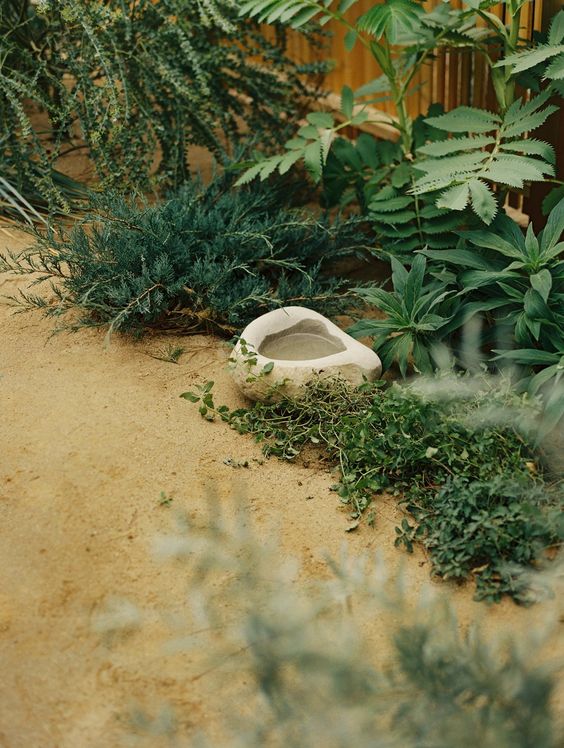Molly Sedlacek is the founder and principal designer behind ORCA—a landscape design and outdoor design studio. ORCA’s mission is to use plants and natural materials in their rawest forms to reconnect people with the earth. Below, Molly shares the importance of permeability in the garden.
ORCA joined forces with GOODLAND to create a Pinterest board that unites our love of water, and the impact it has on the planet and oneself. You’ll find garden inspiration, outdoor products, and design ideas to help you reconnect with nature.

If you fight water, you drown.
When I first read this, I thought of the raging ocean from my childhood, and interpreted it as a metaphor for my personal challenges with control. Now, as a second-generation landscape designer, I have quickly begun to understand the true power of water—how it must be one with the spaces we inhabit— and as gardeners, our responsibility to allow water to flow freely.
Designing a permeable landscape is not only vital to the garden’s health, it is a beautiful relationship with the soil we tend to.
When I first started ORCA, I noticed concrete everywhere in modern residential gardens. This non-permeable material appeared to be a quick solution to cover-up the ground and create functional flat surfaces.
A challenge of concrete is that it doesn’t allow water to move through it. Instead, the water must be drained or sloped to a run-off point, which changes its distribution. As the earth shifts with time, concrete cracks, and our plans of where water is moving gets interrupted. We are met with surfaces that cannot withstand change. This looks like pooling, flooding, bare roots, rotted roots, and a general imbalance of what nature intended. I imagine this on a large scale: a planet covered in non-pervious surfaces, and all of the billions of microorganisms trapped underneath alongside the opportunities for plants to thrive, but can’t because of a solid tarp of gray coating the land.

Because of this, at ORCA we design gardens that are inherently permeable by using paver materials set into the earth’s surface, allowing water to pass through and into our aquifers. This cycle of naturally aggregating the earth and allowing the land to breathe is a part of our ethos of reconnecting humans to earth. When I visit old European gardens and see the worn clay brick that has poetically shifted and weathered over hundreds of years, I smile. And to think that material can be picked up and reused again and again.
Here are some ways to design a garden for permeability:
- Using permeable paver materials that allow water to pass through.
- Including gravel paths and driveways which also allow water to flow freely.
- Creating bioswales and water catchments are also important, as we find water and irrigation use to be more and more scarce each day.
- We also love bathing outdoors. Setting up an outdoor bathing area with a tub and shower that irrigates the garden with its greywater is a closed loop way of watering plants while spending more time in the most sacred room in the home: the garden.
To learn more about ORCA, visit orcaliving.com and explore our Pinterest board to get inspired on how you can design a permeable garden.




